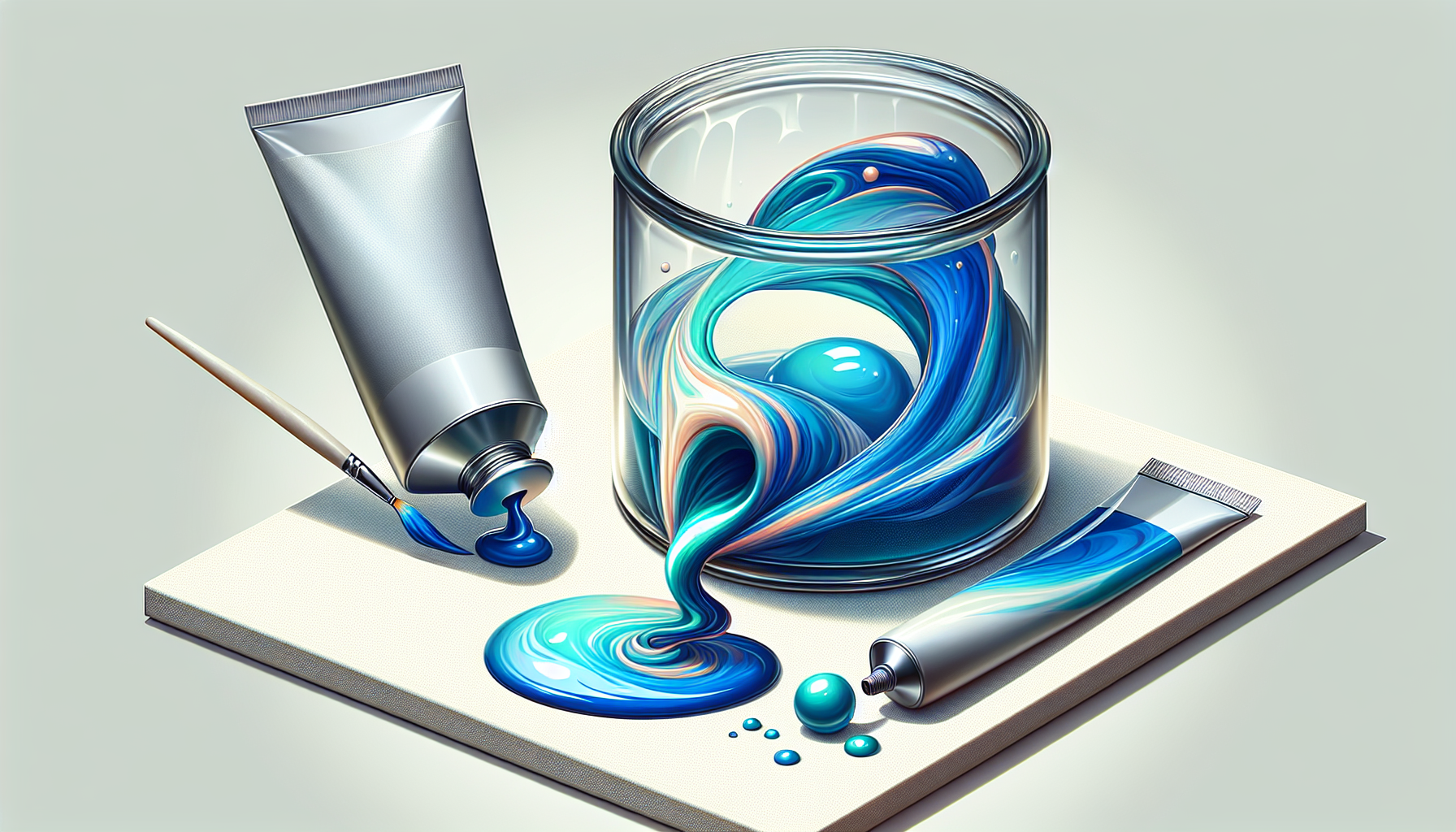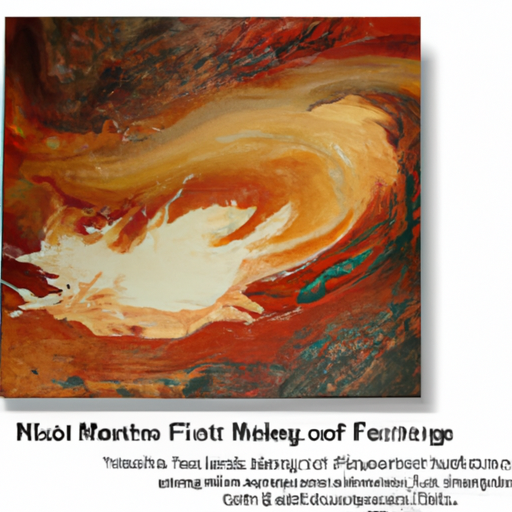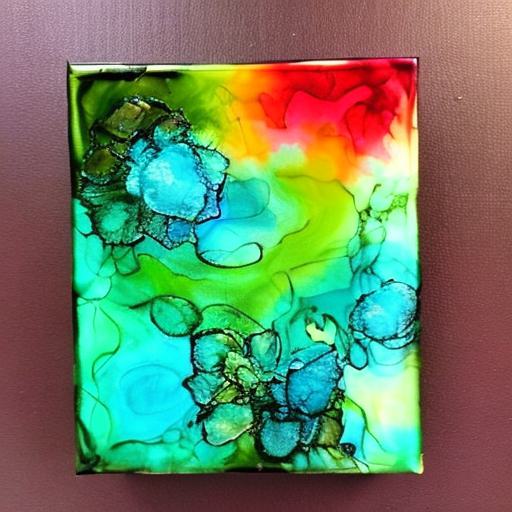If you’re familiar with the vibrant world of acrylic painting, you might have come across the term ‘pouring medium’ and wondered what it is. Exploring this concept, the article, “What Is A Pouring Medium For Acrylic Paint,” demystifies what a pouring medium for acrylic paint is and how it can elevate your artistic expression. The comprehensive piece presents a clear explanation about this significant component of acrylic painting that greatly affects the consistency and texture of your work. Armed with this knowledge, you can bring remarkable depth and fluidity to your artistic creations.
What Is a Pouring Medium for Acrylic Paint?
When speaking of painting, we often think of brushes delicately dabbing at a canvas. However, there’s another form of artistic expression that involves fluid movement and vibrant colors – acrylic pouring. In this method, significant importance is placed on a component known as a pouring medium for acrylic paint. This article serves to provide a detailed guide on what a pouring medium is, its benefits, types, usage techniques, and much more. Let’s get started.
Definition of Pouring Medium
A pouring medium is an additive used in the field of acrylic pouring. It’s essentially a fluid substance that artists add to their acrylic paint to modify its consistency, making it more suitable for this dynamic art form. When mixed with acrylic paint, the pouring medium not only alters the paint’s viscosity but also enhances its color vibrancy, and ensures a smooth, crack-free finish. It works by extending the paint’s volume and drying time, thereby preventing the paint from clumping or forming a ‘skin’ on the surface.
Benefits of Using a Pouring Medium
The application of a pouring medium comes with numerous benefits. Firstly, it improves the flow and leveling of acrylic paints, enabling the creation of flawless paintings with a more realistic fluid effect. Secondly, it enhances the paint’s durability because it prevents cracking and crazing during the drying process. Thirdly, it gives your paint an elevated degree of gloss and brilliance, therefore, intensifying the vibrancy of colors and making your artwork more visually enticing. Lastly, using a pouring medium allows you to experiment with various techniques and styles, thereby expanding your artistic capabilities.
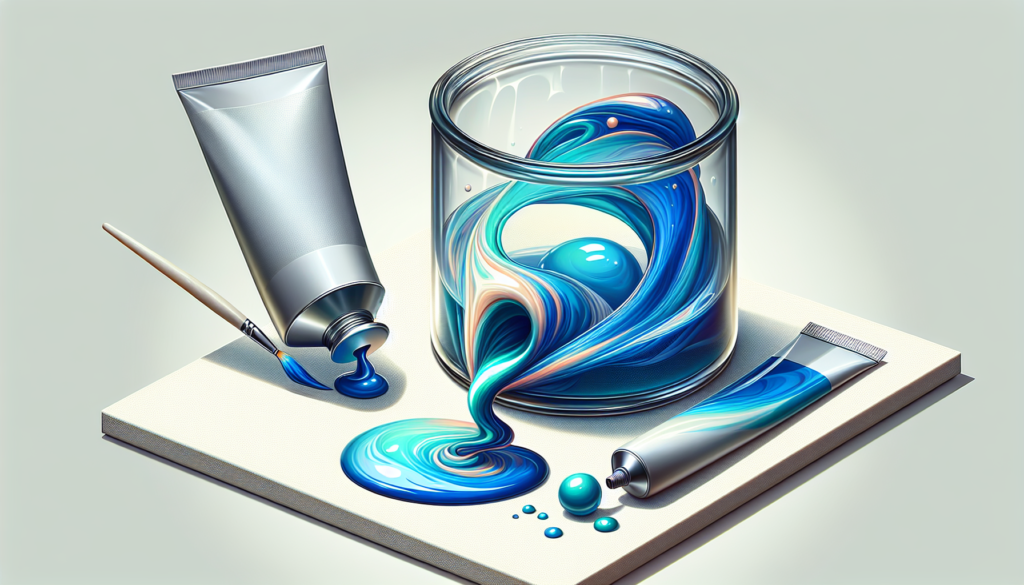
Types of Pouring Medium
There are several types of pouring medium available, each offering different characteristics and effects. The most common ones include Liquitex Pouring Medium, Golden GAC800, Floetrol, and Glazing Liquid. While Liquitex increases the transparency, gloss, and flow of your paint, Floetrol is known for its ability to reduce brush marks and improve the flow of paint without diluting its color. On the other hand, Golden GAC800 prevents crazing and offers a uniform surface. Glazing Liquid, meanwhile, extends drying time and is excellent for creating glazes. The choice of pouring medium entirely depends on the effect you seek to achieve.
How Does a Pouring Medium Work?
Pouring mediums bind to the acrylic paint, altering its consistency and making it more fluid. This happens because the polymers in the medium interweave with those in the acrylic paint, making it less thick and easier to manipulate. This change in viscosity allows the paint to flow more freely. In addition, a good-quality pouring medium could also slow down the drying process, preventing any cracks from forming on the canvas.
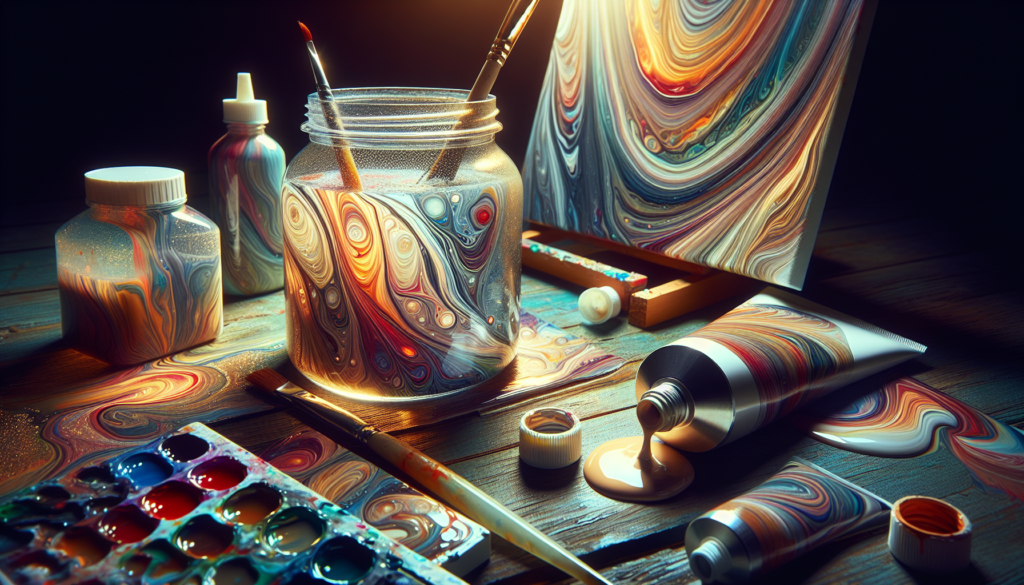
Mixing Ratios for Acrylic Pouring
The ratio of acrylic paint to pouring medium depends on the type of medium used and the effect you want to achieve. A typical ratio would be equal parts of paint and medium. However, it might vary. For example, a medium like Floetrol might require a different ratio or mixture, depending on the paint’s consistency. Trial and error is quite common until you find the perfect mixture for your desired result.
Different Techniques for Using Pouring Medium
Various techniques exist when using a pouring medium depending on the effect one desires to create. One of the most well-known is the ‘dirty pour’, where different paint colors are added to a single cup before being poured onto the canvas in a single step. The ‘swipe’ technique, on the other hand, involves layering colors on a canvas and then dragging or ‘swiping’ a tool across the surface to create a specific pattern or design. There’s also ‘puddle pouring’, where individual puddles of color are poured onto the canvas and allowed to blend together naturally.
Common Mistakes to Avoid
While using a pouring medium seems straightforward, certain common mistakes can dampen the outcome. One of the frequent mistakes is not mixing the pouring medium properly. This can result in an uneven spread of paint on the canvas, leading to clumps and a lackluster finish. Over-diluting the paint with the medium is another common error that can result in the paint losing its vibrant color. Using a wrong or poor-quality medium can also lead to an undesirable finish such as cracking or crazing during the drying process.
Alternative DIY Pouring Mediums
If purchasing a commercial pouring medium isn’t feasible, you can opt to make one yourself. One of the common DIY mediums is PVA glue mixed with water. Not only is it cost-effective, but it also provides a glossy finish and enables the paint to flow easily. Another DIY pouring medium can be a mix of distilled water and acrylic gloss medium/varnish. However, be aware that results may vary with these DIY substitutes, and experimentation is key to understand how different mixtures interact with your acrylic paints.
Finishing and Drying Process
After your masterpiece is complete, the drying process commences. This could take anywhere from a few hours to several days, depending on the type of medium used and the thickness of the paint. It’s essential to allow your painting to dry completely before moving or touching it to avoid ruining the artwork. Once dry, it’s a common practice to seal the painting with a sealant or varnish to safeguard it from dust, UV rays, and other external factors that could cause damage over time.
Tips for Using a Pouring Medium
To conclude, here are some best-practice tips for using a pouring medium:
- Always properly mix your paint and medium to ensure a smooth, uniform texture.
- Experiment with different mediums to discover which one best meets your needs or style.
- Don’t over-dilute your paint. Less is more when you’re getting started.
- Use quality products for a lasting and vibrant finish.
- Allow your painting to dry completely before moving onto the next step.
- Remember to seal your work after it dries to ensure its longevity.
In the realm of acrylic pouring, a good pouring medium can make a significant difference to your artwork, affecting everything from the flow of the paint to its finish.
So as you embark on this exciting journey of fluid art, keep in mind these crucial points about the importance, choice, and use of an appropriate pouring medium in creating your acrylic pour art pieces. Happy pouring!
